Cats communicate in an array of subtle ways. To the novice cat owner, it may feel confusing trying to understand how your cat is feeling. A dog’s wagging tail means a happy dog while a cat’s wagging tail could mean they are concentrating or it could mean they are annoyed.
There are, however, cues that will give you a some insight into how your cat is feeling. While cats can express their emotions through their tails, body stance, and vocalizations, for this article we will focus on how to read a cat’s eyes and ears.
Understanding a cat’s emotions through their eyes
Feline communication heavily relies on eye contact. A cat’s eyes can convey a range of emotions, from fear and aggression to relaxation and even affection.
There are two areas of the cat’s eyes that you want to pay attention to in order to read their emotional state.
A cat’s pupil dilation can indicate their mood
The first is pupil dilation. Take a look at your cat’s pupils.
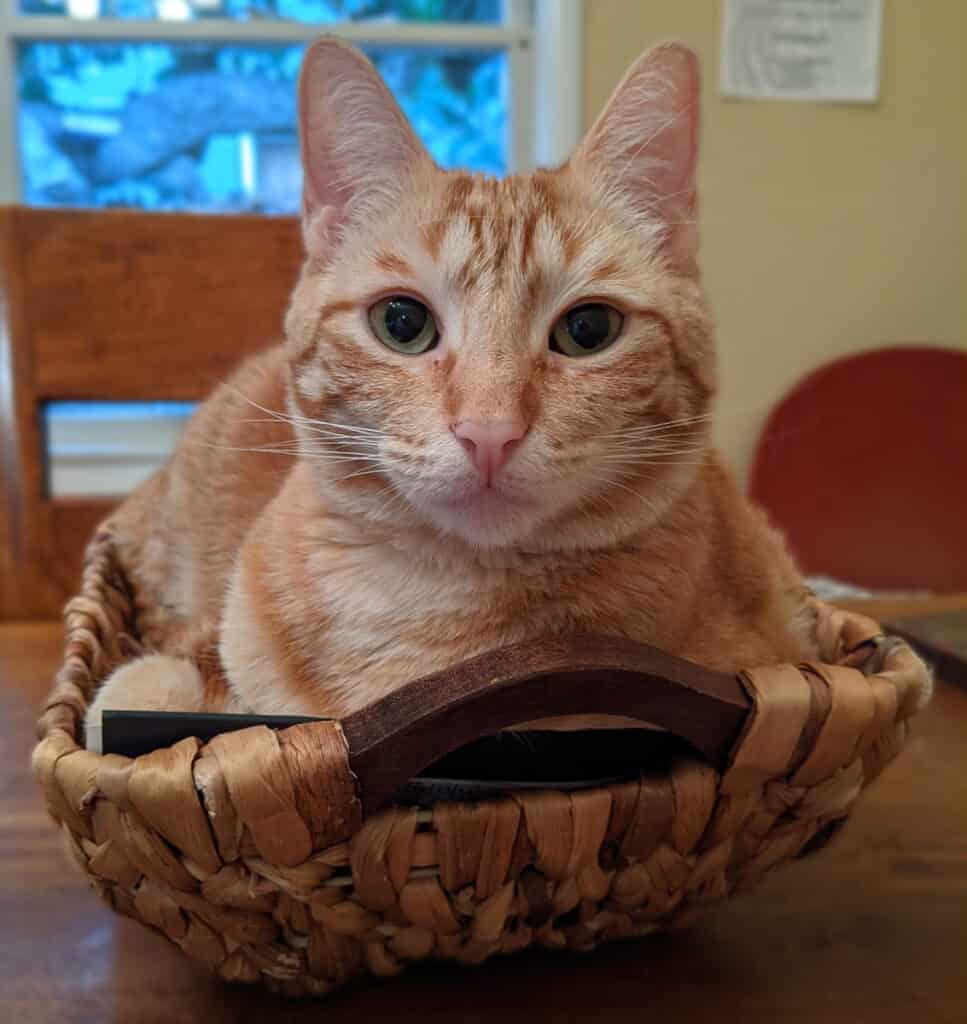
A relaxed and contented cat will have normal-sized pupils that are proportional to the amount of light in the space they are in. A cat’s pupils will naturally dilate or constrict depending on how much light is hitting their eyes.
Excitement, fear, or anger can also cause your cat to dilate their eyes. Eye dilation in a cat is an involuntary response designed to enhance a cat’s vision and awareness of the surroundings when they’re feeling wary, scared, or excited.
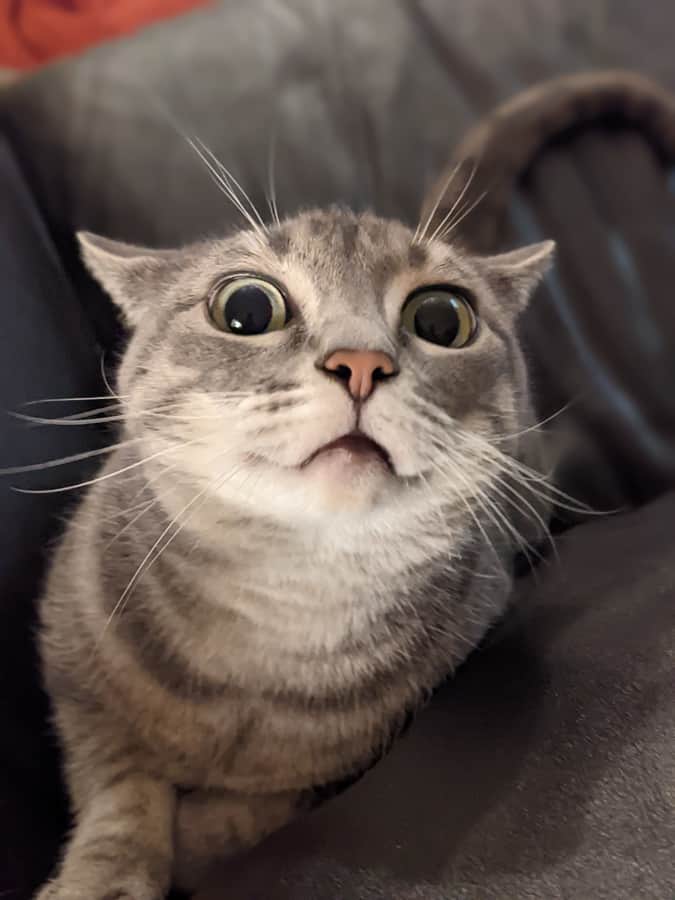
Narrow, slit-like pupils can indicate anger or aggression.
Relaxed eyelids
The second area to observe is how wide-eyed your cat appears. A relaxed cat will lower their eyelids so their eyes aren’t fully open.

If your cat likes the person they are looking at, they may even engage in what’s known as a slow blink. This is the equivalent of a cat saying “I love you. You can return the sentiment by half closing your eyes and slow blinking back.
This action is also known as a “cat kiss,” and it indicates that your cat trusts you and feels safe in your presence.
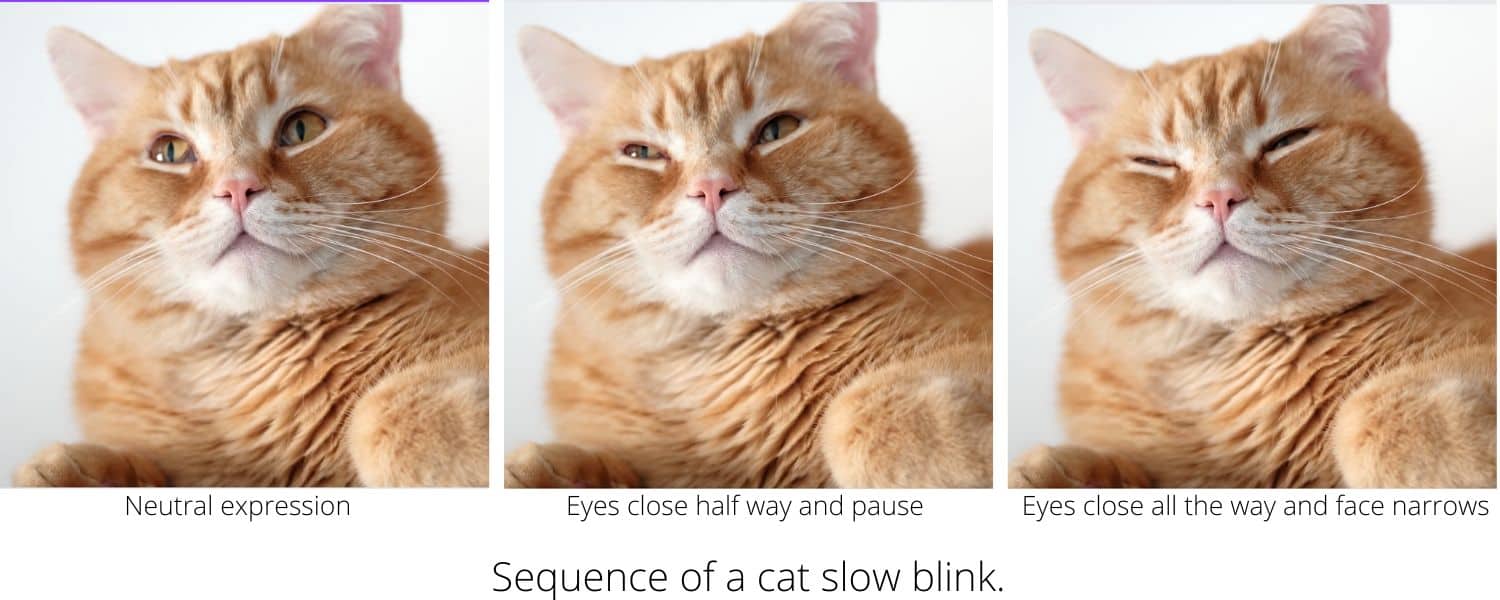
How a cat’s ears shows their mood
The position and movement of a cat’s ears can also provide you with essential clues about their mood and emotions. Reading the emotion your cat is experiencing is easier in cats with prick ears compared to cats with folded ears.
Upright Ears
If your cat’s ears are standing upright, this generally indicates that your cat is alert and interested in its surroundings.
If one ear is upright and the other is angled, that is a sign that your is listening to something. With 32 muscles, cats have a great range in how much they can swivel their ears to pinpoint sounds.

Sideways Ears
Ears that swivel to the side may suggest that your cat is feeling nervous, anxious, or agitated. This type of ear position is also known as “airplane ears” or “airplane mode” in a cat.
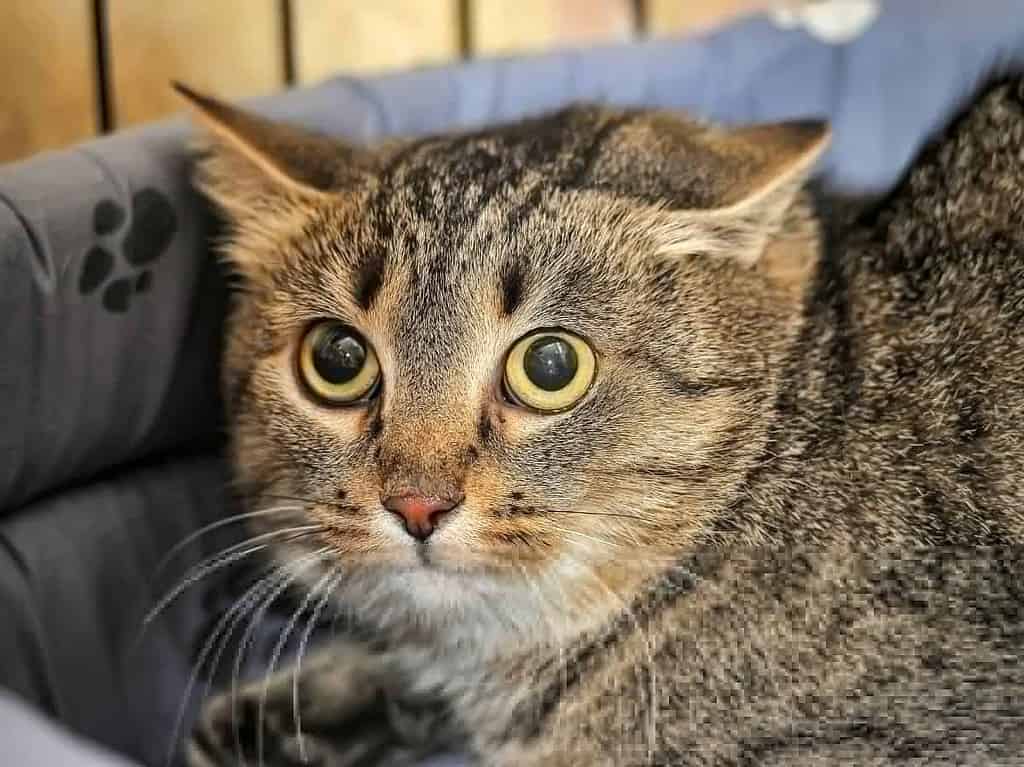
This ear position is a sign that your cat is feeling uncomfortable or annoyed. When a cat is angling their ears so they are stick straight out at the sides, that’s annoyance.
When a cat’s ears are sticking slightly back and the cat’s posture and other body language is relaxed, then your cat is most likely listening to a noise behind behind them. Look for additional clues in their body language such as a dilated pupils, a tense body, or a wagging tail to tell you if your cat is annoyed.
Over time, you will learn to discern the difference between your cat being annoyed and your cat listening to things.

Flattened Ears
Ears that are completely flattened against the head are usually a sign of fear, anger, or aggression.
This is a clear sign that your cat is very upset or scared and should not be approached.
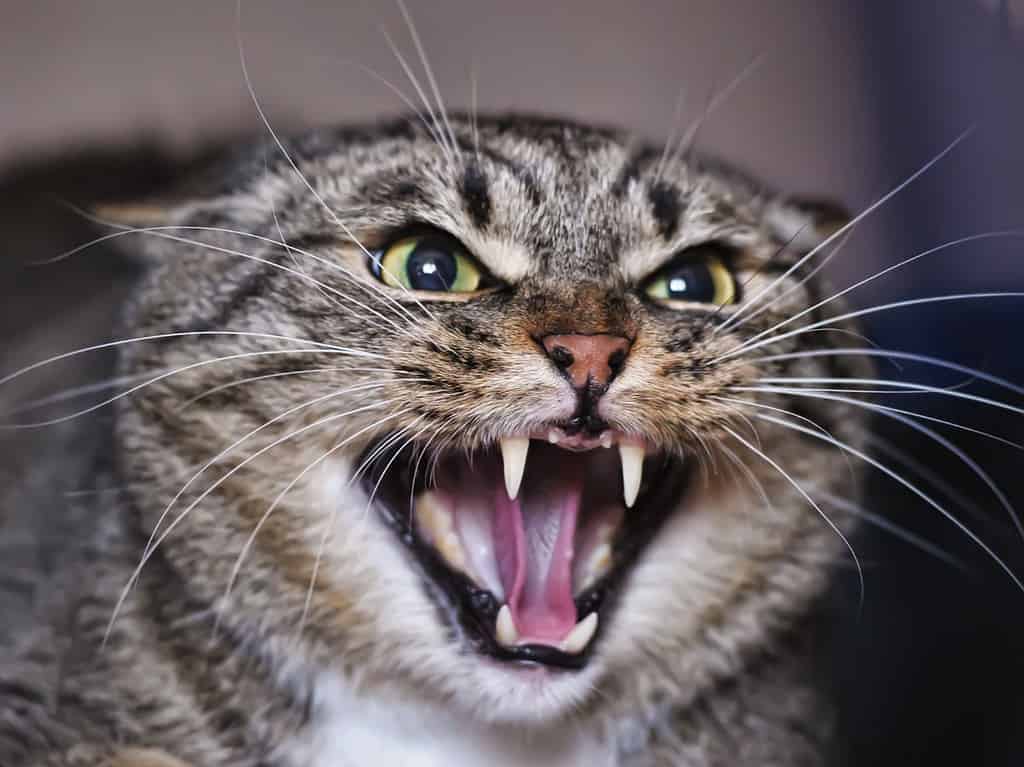
Use context to decipher your cat’s emotions
Over time and with patience, you can learn to decode your cat’s emotions. While the ears and eyes of a cat can tell you a lot about how they are feeling, other clues in their body language and the environment can help you learn whether your cat is feeling positive or negative emotions.
References
Humphrey, T., Proops, L., Forman, J., Spooner, R., & McComb, K. (2020). The role of cat eye narrowing movements in cat–human communication. Scientific Reports, 10(1), 1-8. https://doi.org/10.1038/s41598-020-73426-0
Quaranta, A., d’Ingeo, S., Amoruso, R., & Siniscalchi, M. (2020). Emotion recognition in cats. Animals, 10(7), 1107. https://doi.org/10.3390/ani10071107







